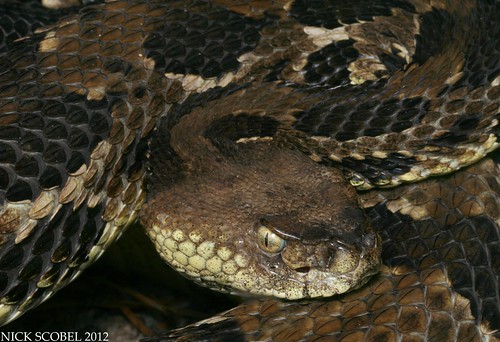Timber Rattlesnake - Crotalus horridus
An ominous and impressive snake to meet in the field, timber rattlesnakes are always a treat. This big boy was more than happy to stand his ground and allow me to take a few photos before disappearing into the thick understory of pine scrub. Some people have compared the timbers of the pine barrens to the canebrakes of the southeastern United States. Although they share similar coastal plain forests as their habitat and lowland swamps as winter retreats, the two are not similar in appearance for the most part. However, their look is unique among other timber populations and has garnered them the name "pinebrake" by some affectionate herpetologists. Nonetheless the pine barrens population is a special one, they are rarely seen and extremely isolated. Sadly, these snakes have had and continue to have a hard time with people. Historically, habitat loss was the main factor which contributed to their declines in the pine barrens, but now it is conflicts with humans which continue to plague its numbers. Many are still killed needlessly out of ignorance or lose their lives my motorists which either do not pay attention or run them down intentionally.
The NJ Department of Fish & Wildlife, Pinelands Commission, Pinelands Preservation Alliance, and other conservation organizations continue to fight for the long term survival of this species in the New Jersey pine barrens. The biggest threat to the future of the timbers of the pines is us. If you're fortunate enough to encounter one of these impressive snakes, admire it from a distance and leave it be. I've attached a short video I took of the snake for your viewing pleasure, enjoy!



No comments:
Post a Comment